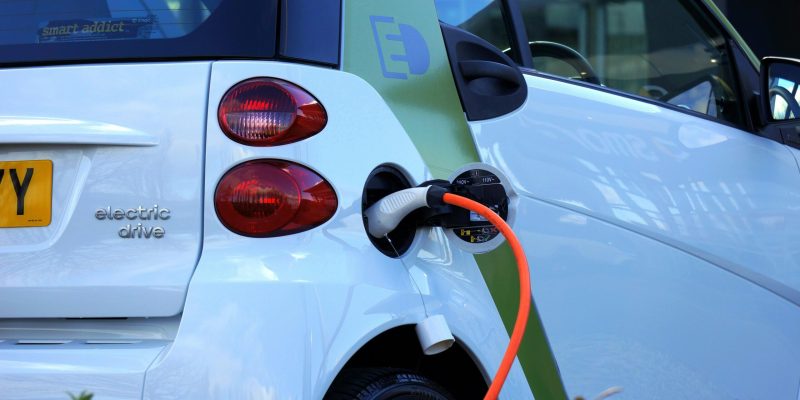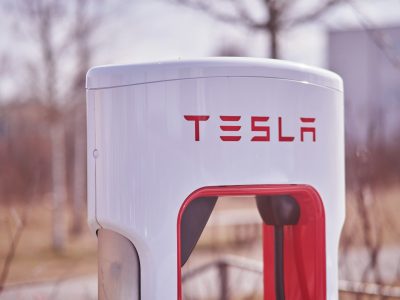
Electric vehicles (EVs) are no longer the niche option they once were. With declining battery costs, improved performance, and expanding infrastructure, EVs are reaching a tipping point that could see them overtake gasoline cars in a matter of years.
As battery technology improves and prices fall, it’s becoming clear that EVs are positioned to fundamentally change the automotive market globally.
Let’s break down the catalysts driving this shift and what they mean for consumers, the economy, and the environment.
Battery prices are declining
One of the biggest barriers to EV adoption has always been cost, with batteries accounting for up to 60% of the total vehicle price.
According to Goldman Sachs, the average cost of EV batteries has been dropping steadily, from $153 per kilowatt-hour (kWh) in 2022 to $149 per kWh in 2023.
By 2026, these costs are projected to fall to $80 per kWh, a nearly 50% drop from current prices.
This price reduction brings EVs close to cost parity with internal combustion engine (ICE) vehicles on an unsubsidized basis.
The reason for these declining costs is largely due to technological innovations, such as the shift to simpler, cell-to-pack battery designs.
As explained by Goldman Sachs, this innovation eliminates modules, allowing batteries to save space and reduce costs while increasing energy density by around 30%.
This means smaller, more powerful batteries that are less expensive to produce. Additionally, decreasing prices of metals like lithium have also contributed to cost declines, further lowering the price consumers pay for EVs.
Global EV adoption is closer than anticipated
Adoption rates across the globe are also telling a story of momentum that’s hard to ignore.
Bloomberg reports that as of the end of last year, 31 countries have passed the 5% threshold of EVs in new car sales, signaling the beginning of mass adoption.
Once a country crosses this 5% mark, historical trends show that adoption typically accelerates, often reaching 25% of new car sales within four years.
This pattern can also be seen in several emerging markets, such as Thailand and Turkey.
In Thailand, domestic production of EVs by Chinese automaker Great Wall Motor helped EVs hit 13% of new car sales in 2023.
Similarly, Turkey crossed the 5% mark within a year, spurred by local brand Togg’s launch of the all-electric T10X SUV, which directly competes with Tesla’s Model Y.
These examples highlight how quickly EV adoption can grow once it reaches this tipping point, even in regions where EVs were initially less popular.
US EV market is catching up
The US market, while behind some other regions, is showing signs of catching up.
The US crossed the 5% tipping point for EVs in new car sales in 2021, but adoption has been slower compared to other developed nations.
According to Bloomberg, EVs made up only 8.1% of US auto sales in recent quarters, significantly lower than the 18.1% average seen in countries further along in the adoption curve.
This lag is partially due to the American preference for larger vehicles like pickup trucks, which require bigger batteries that were initially more costly.
However, as battery technology advances and costs decrease, EV adoption in the US is likely to accelerate.
Tesla remains the country’s dominant EV player, but traditional automakers like Ford, General Motors, and even startup Rivian are making inroads into the market with EV trucks and SUVs designed to appeal to American drivers.
Key advantages of EVs
Cost reductions are just one part of the EV equation. Other advantages are making EVs increasingly appealing to consumers, from convenience to lower maintenance costs.
Charging at home
Unlike gas cars that need frequent refueling, EVs offer the convenience of charging at home. Most EV owners charge their vehicles overnight, eliminating the need for weekly visits to a gas station. With models like the BYD Atto 3, which has a 260-mile range, drivers only need to plug in every couple of days for regular city driving. Most Americans drive around 40 miles per day, well within the range for home-charged EVs.
While the convenience of home charging may not work for everyone—especially for those without a garage or driveway—only 10% of Americans primarily use street parking. As EV adoption rises, apartment complexes are also starting to add EV chargers to their parking lots.
Lower maintenance
Another significant benefit of EVs is their simplicity. Traditional combustion engines have thousands of moving parts, each with the potential to break down over time. EVs, on the other hand, have far fewer parts, reducing the need for maintenance and lowering repair costs. In fact, EV maintenance costs are estimated to be around 50% lower than those for ICE vehicles, making EVs a more economical choice in the long term.
Quiet and fast
EVs are also simply more enjoyable to drive. The electric motor provides instant torque, giving EVs a significant acceleration advantage over gasoline cars. Many EVs can go from 0 to 60 mph in seconds, outperforming most ICE vehicles. And unlike the roar of a gasoline engine, EVs are quiet, which enhances the driving experience and reduces noise pollution.
Could gas stations become obsolete?
As EVs become more popular, traditional gas stations may become less common, creating a “doom loop” for gasoline cars.
Gas stations operate on a high-volume, low-margin model, relying on a steady stream of customers to stay profitable.
As EVs take a larger share of the market, fewer people will be buying gasoline, which could lead some stations to close or convert to charging facilities.
This shift could further incentivize consumers to switch to EVs.
As gas stations become fewer and farther between, the convenience of owning a gasoline car may decrease, adding to the reasons for consumers to choose EVs instead.
China’s dominance and the American challenge
China has been aggressive in the EV market, with companies like BYD taking a substantial lead in global EV production.
Chinese EV brands are not only affordable but also widely available, particularly in emerging markets.
According to the Alliance for American Manufacturing, China’s dominance in EV manufacturing represents an “extinction-level event” for American automakers if they fail to catch up.
While Tesla has played a pioneering role, it alone may not be enough to keep the US competitive against China’s rapidly growing EV market.
American automakers are now scrambling to develop competitive EV models, but it remains to be seen if they can keep pace with China’s established EV giants.
The future of the American auto industry may very well depend on how quickly it can adapt to an EV-dominated market.
A bet on the future
The EV revolution seems inevitable, driven by technological advancements, cost reductions, and global adoption rates.
The next few years are likely to bring even more innovations in battery technology, further lowering prices and improving vehicle performance.
As EVs become cheaper, easier to own, and more accessible, they are positioned to fully replace gasoline cars for most consumers, marking a monumental shift in the auto industry.
As adoption accelerates, the infrastructure to support EVs will continue to expand, while gas stations may become increasingly scarce.
With American, Chinese, and European automakers all competing in this fast-evolving market, the automotive landscape is transforming at a pace we haven’t seen in decades. The era of the EV is here, and it’s not just a trend—it’s the future of transportation.
The post Are electric vehicles truly superior to gasoline cars? appeared first on Invezz









